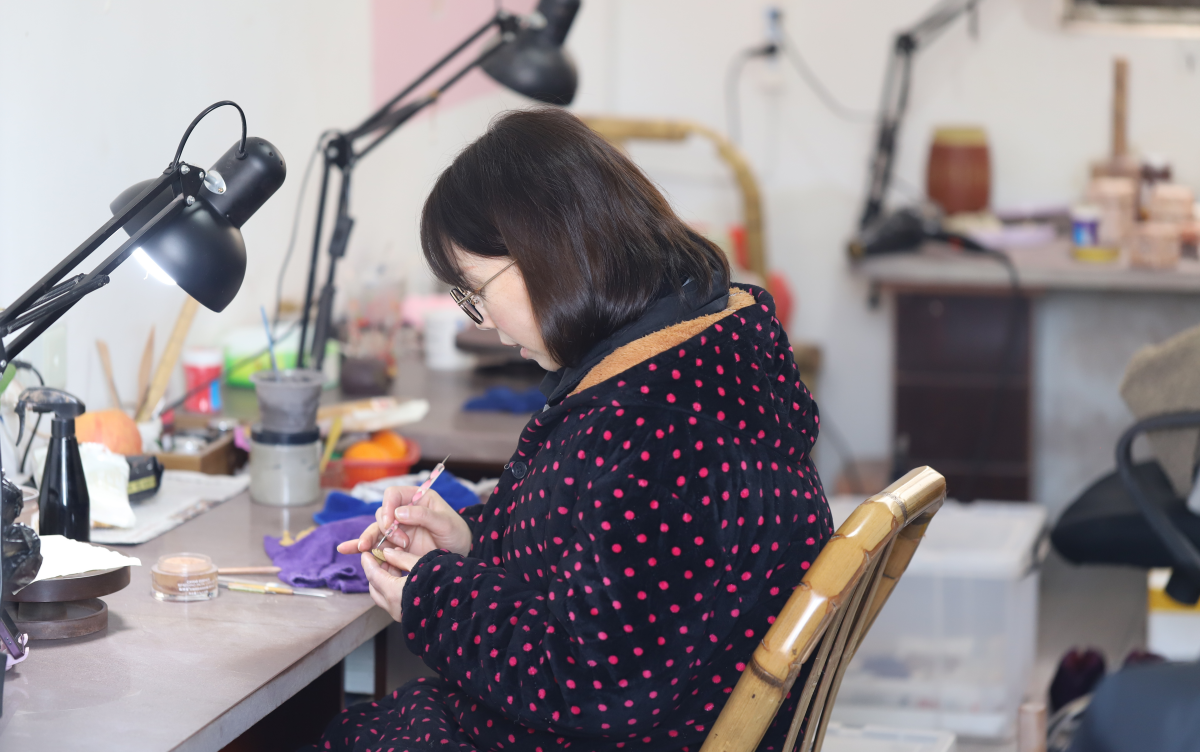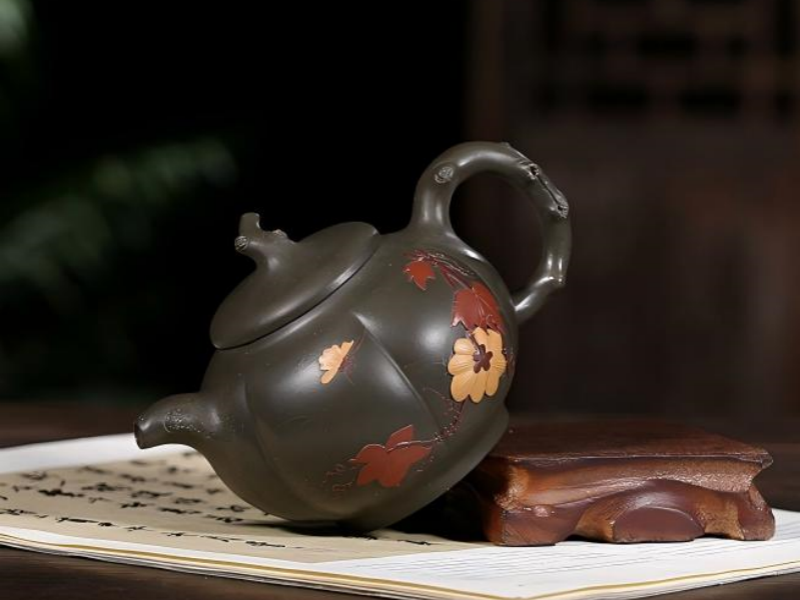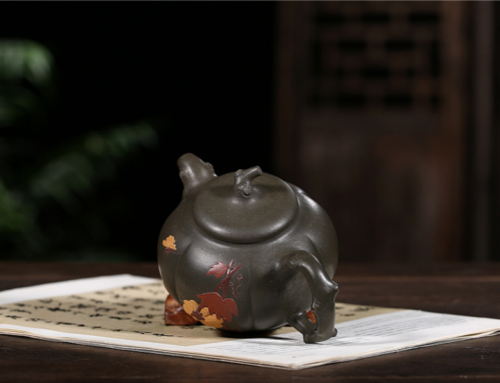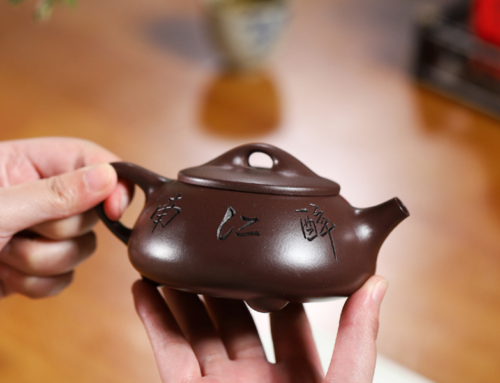How to Season and Care for Your Clay Teapot
Introduction
Nothing enhances tea drinking quite like a well-seasoned clay teapot. Whether you’re just getting started in the wide world of loose leaf tea or you’ve spent years honing your brewing technique, understanding how to season and care for your clay teapot is key. Certain types of clay teapots, including Yixing and Tokoname, display unique characteristics that improve the taste, smell, and enjoyment of a good cup of tea. But achieving these incredible results does take a little bit of TLC. Seasoning your clay teapot is not only a great tradition, but a crucial step in preserving your clay teapot with every use. A properly seasoned clay teapot enriches its flavor profile with every cup of tea. With the right care, your clay teapot can remain in perfect condition for decades. It’s a ritual that brings your clay teapot, favorite tea, and tea ceremonies together like no other.
Why Season & Care for Your Clay Teapot?

In this comprehensive guide, you’ll find expert advice, practical steps, and in-depth knowledge on everything you need to know about seasoning and caring for your clay teapot. From selecting the right teapot to troubleshooting common issues, consider this your go-to resource for a perfect brewing experience. Quick facts About Why Clay Teapots Matter: Factor: Porous surface | Benefit: Absorbs tea oils, enhances flavor Factor: Natural material | Benefit: Retains heat, perfect for slow brewing Factor: Unique patina | Benefit: Develops over time, adds to tea ritual
Understanding Clay teapots
Types of Clay Teapots and Their Unique Qualities
Clay teapots are more than simple vessels—they’re beloved companions in tea culture. The most well known types are Yixing clay teapots from China, and Tokoname clay teapots from Japan. Yixing Clay Teapots: Yixing teapots have been treasured by tea drinkers for hundreds of years. The clay material, purple clay (zisha), is just porous enough to absorb traces of tea oils. Over time, these oils build up in an additional layer on the teapot, creating an unglazed coating with its own unique luster and flavor. Clay teapots are better suited for oolong, black, and puerh teas, because the clay infuses them with a deeper, more rounded flavor. Tokoname Clay Teapots: Tokoname is also known for clay teapots. Japanese Tokoname teapots are typically used for Japanese tea. These teapots also undergo a slight polishing process before being sold. Tokoname teapots have a smooth, iron-rich clay texture that can infuse sencha and gyokuro teas with more subtle depth.
Why Clay Teapots Stand Out
Porousness: Clay teapots are porous, with microscopic holes that absorb the flavor of the tea. With each new user, the aroma and flavor of the tea is heightened. Heat retention: Clay teapots retain a lot of heat and maintain this heat longer than a regular porcelain or glass teapot. Clay teapots heat slowly, yet evenly. This property of clay is what makes it more effective when applied in something like a poultice or toe warmer. In the context of tea, it is also ideal for those who prefer a more relaxed approach to brewing, and want the tea to brew indefinitely. Patina: Over time and with gradual use, clay develops a shiny, rich patina with its own unique tea luster. The word itself may mean something along a spectrum between bronze-like or varnish-like green, but in both cases, the color is usually the same as or deeper than the color of the vessel. It is said that if the buildup of tea oils is done properly, one need only to pour hot water into an empty clay teapot, and it will still yield a texture as if tea had been brewed inside. Test Case: One tea collector once seasoned their clay teapot only with higher end Tieguanyin tea. After 6 months, the clay had absorbed the tea’s minerals and oils, giving the Tieguanyin a higher aromatic euphoria and richer sweet floral note. Comparision Table: Clay vs Porcelain and glasses teapot: Feature: Heat capacity | Clay Teapot: High | Porcelain Teapot: Medium | Glass Teapot: Low Feature: Absorb potential | Clay Teapot: High | Porcelain Teapot: Low | Glass Teapot: None Feature: Patina | Clay Teapot: Yes | Porcelain Teapot: No | Glass Teapot: No Feature: History | Clay Teapot: Hundreds years | Porcelain Teapot: Modern | Glass Teapot: Fashional Clay teapots are soulmates. Understanding their characteristics well you will know why it is important to season it as well and take care of it…
Seasoning Your Clay Teapot

First thing first — examine and clean your teapot
Be sure to examine your new teapot before seasoning. Rub leftover water along the teapot rim and body. Check carefully for any fine cracks, chips or manufacturing defects. A fine teapot must be flawless. Did you know? Even the smallest crack can grow over time, so it is always worth checking before you start. Cleaning Your Clay Teapot: A porous clay teapot will absorb everything that comes into contact with it. Steer clear of soap, detergents, and scented cleaning products. Rinse the teapot thoroughly under warm water. If factory dust or residue is visibly present, fill the teapot (including lid) with hot water and let sit for 20–30 minutes. Rinse once more. 💡 Use soft brush to gently scrub inside if you see stubborn residue. First Time Cleaning: Check for crack, chips or loose handles Rinse in warm water (no soap) for a few second Soak teapot in hot water for 20-30 min Rinse thoroughly and air dry
Seasoning a Clay Teapot (Step-by-Step)
Finally, let us get to the main topic of this article – how to season your clay teapot. To season a teapot is essentially getting your teapot acquainted with its life partner – the tea that you will be primarily making with it. In this simple process, you’ll introduce the clay teapot to the right tea and allow it be infused with tea oils which help to develop its flavor and aroma over the years.
Choosing the Right Tea
The first step is to select only 1 tea. The old wisdom is that Yixing teapot should be seasoned with oolong, black or puerh tea whereas Tokoname teapots should be seasoned with green tea. Do not season multiple types of tea in one clay teapot. Otherwise, you’ll end up with a strange soup of aroma and flavor. Fact: Clay will “remember” your seasoning selection and amplify that tea’s flavor in future uses.

Rinsing and Soaking: Fast Techniques
Start with a soft rinse: Soak your teapot in a pool of hot water for 30 minutes. This will open the pores of the clay and rid it of remnant kiln dust. Pro tip: Avoid using boiling water directly from the kettle, let it cool for a minute to avoid thermal shock.
Boiling to Properly Season the Pot
Place your teapot in a pot filled with room-temperature water (such that the teapot is completely submerged, if possible). Gently bring the water up to a gentle boil—don’t sudden increase the heart so the boil is rapid. Let your teapot simmer for 30–40 minutes. This will thoroughly clean the clay and prep it for tea. Clay Type timing: Yixing: Soak Time 30 mins | Boil Time 40 mins Tokoname: Soak Time 20 mins | Boil Time 30 mins Other: Soak Time 20–30 mins | Boil Time 30–40 mins Note: Clay teapots can crack from sudden temperature changes! Don’t use high heat.
Brewing Tea to Finally Season It
Afterwards, fill with the teapot with strong, warm tea (of the type you’ll be regularly drinking from that pot) and let it sit for 1–2 hours. Throw out the tea and rinse off the teapot with warm water. This step adds much needed tea oils to the clay and starts to build up those layers of flavor. Allow the teapot to air dry, never wipe it with a towel that might leave lint behind. If possible, place it upside down on a clean drying rack. After drying, your clay teapot is now fully seasoned and ready for daily use.
Common Mistakes When Seasoning Clay Teapots

The process of seasoning a teapot simple, but a few missteps can ruin a teapot. Try to avoid these common pitfalls when seasoning teapots: Boiling too vigorously or for too long: Boiling too hard or too long can put your clay teapot under excessive strain and crack it. Adding soap to the cleaning process: Soap leaves residues and will damage the teapot’s ability to absorb the nutrients of tea. Mixing different teas during seasoning: Resistance to different astringent teas at the same time will result in an compromised and confused seasoning. Not adequately soaking/boiling the teapot: If you pour boiling water directly into a pot that has been soaked or boiled, the clay may crack. “A seasoned clay teapot is a living object—it remembers every cup of tea you brew.” – Tea Master Lin Hu Quick Reference Table: How to Season a Yixing Teapot: Step: Inspect | Description: Look for cracks and chips Step: Rinse | Description: Don’t use soap, just warm water Step: Soak | Description: 20–30 minutes of soaking in hot water Step: Boil | Description: Slow simmer, 30–40 minutes Step: Brew | Description: Fill to the brim with tea leaves, let sit 1–2 hours Step: Dry | Description: Air dry upside down
Daily Care and Long-Term Maintenance
Once your clay teapot is seasoned, regular care is simple but critical. Every time after you brew tea, immediately rinse the teapot with warm water—never leave tea in the pot overnight, where it can stain or leave odors. Being porous, unglazed clay will absorb whatever you leave inside; cleaning it promptly will keep your pot intact and its flavor memory clear. Daily Cleaning Checklist: Empty remaining tea leaves and liquid Rinse thoroughly with warm water (don’t use soap) Wipe the exterior with a soft, lint-free cloth Leave the lid off, and allow the teapot to air-dry completely Storage Tips: Keep your clay teapot in a dry, ventilated space, away from sunlight and strong smells. Excessive humidity will lead to mold, while sunlight may fade the clay’s distinct color. If you aren’t using the teapot every day, wrap it with a clean cloth or store it inside a dedicated cabinet. Expert Advice: “Clay teapots are friends—they love to be given care and attention. The more you use and maintain them, the better the tea will taste.” – Tea Artisan Mika Tanaka
Troubleshooting: Odors, Stains, and Damage

Despite careful usage, clay teapots can sometimes run into problems. Odors occur when tea residue builds up, or the teapot isn’t dried thoroughly. Staining is natural and part of the teapot’s character, but sometimes you’ll want to deal with persistent marks. How to Fix Common Problems: Odors: Fill the teapot with hot water and let it sit for a few hours. Repeat the process if necessary. If odors persist, make a strong batch of the tea you normally use and leave it inside for a day. Stains: Most stains aren’t a problem, but harmless signs of the teapot’s age and usage. If you want to lighten them, use a soft brush and warm water—never chemical cleaners. Mold: If you find mold on the teapot, soak it in hot water for several hours and rinse thoroughly. Air dry in direct sunlight for a short time, but otherwise don’t leave the teapot out for long or the clay may fade. Chips or Cracks: Unfortunately, cracks cannot be repaired. You can use fine sandpaper to smooth chipped areas, but avoid using damaged teapots for brewing. Table: Common Issues and Simple Solutions: Problem: Odor | Solution: Soak in hot water, air dry | Prevention: Rinse after each use Problem: Stains | Solution: Brush with warm water | Prevention: Don’t let tea sit overnight Problem: Mold | Solution: Soak, sun dry briefly | Prevention: Store in dry, ventilated place Problem: Chips/Cracks | Solution: Sand minor chips, avoid brewing if cracked | Prevention: Handle gently, inspect regularly Did you know? Tea masters often appreciate the individual imperfections and wear on their clay teapots, viewing them as the traces left by many happy pots of tea.
Frequently Asked Questions
You may have a few nagging questions. Even with Step-by-Step Guide to Seasoning and Caring for Your Clay Teapot. Here you will find answers to some of the most frequent concerns we have come across. All with the purpose of helping you achieve the best results with your clay teapot.

Quick Reference Table: FAQ Summary: Question: Can I Brew more than Tea with this Pot? | Short Answer: Not recommended Question: How Often Should You Re-season a Teapot? | Short Answer: Only after deep-cleaning Question: How do I get Odors Out of a Teapot? | Short Answer: Soak in Hot Water, Brew Strong Tea Question: Is My Teapot Dishwasher Safe? | Short Answer: Never Question: How do I Get Stains Out of my Teapot? | Short Answer: Soft Brush, Warm Water Question: Will my Teapot Taste Different Now? | Short Answer: Clay enhances the flavor and molds to your tea “A clay teapot is like a diary, each stain and aroma is a story.” – Tea Scholar Xu Jian
Conclusion
Seasoning and maintaining your clay teapot is an artful endeavor that honours hundreds of years of tradition. A properly seasoned clay teapot will add richness and life to each cup of tea you brew beyond the teabag or loose leaves. From seasoning to storing to remembering to never use soap, your teapot will become a history of its own with each new brew.












